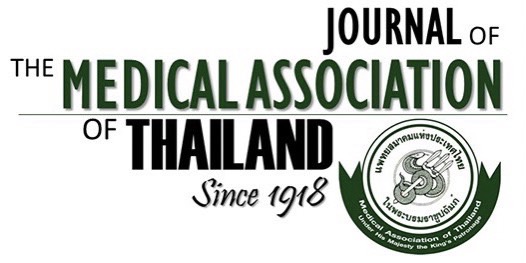Paranasal Sinus Accessibility of Large Volume Saline by Intranasal Instillation in Various Head Positions
Sanguansak Thanaviratananich MD*, Sirisuit Ruengpolviwat MD*, Warinthorn Phuttharak MD**, Pornthep Kasemsiri MD*, Kowit Chaisiwamongkol MD***
Affiliation : * Department of Otorhinolaryngology, Faculty of Medicine, Khon Kaen University, Khon Kaen, Thailand ** Department of Radiology, Faculty of Medicine, Khon Kaen University, Khon Kaen, Thailand *** Department of Anatomy, Faculty of Medicine, Khon Kaen University, Khon Kaen, Thailand
Objective : To determine the distribution of instilled fluid to various sinonasal areas for a large volume intranasal instillation
at various head positions in fresh frozen cadavers.
Material and Method: This experimental study was conducted by intranasal instillation of a large volume saline mixed with
contrast media in four fresh frozen cadavers at three different head positions (Mygind, vertex-to-floor and Ragan positions)
before and after functional endoscopic sinus surgery (FESS). The presence of saline in nasal cavities and paranasal sinuses
were determined by Cone beam computed tomography of paranasal sinuses and assessed by a radiologist and a rhinologist.
Results : Vertex-to-floor and Mygind head positions could deliver a large volume saline to the olfactory cleft, the sphenoethmoidal
recess and the frontal recess either before or after FESS. After FESS, vertex-to-floor position could deliver more saline into
the anterior ethmoid sinus and the frontal sinus than other sinuses, while Mygind head position delivered more saline into the
sphenoid sinus, posterior ethmoid sinus and anterior ethmoid sinus than the maxillary and the frontal sinuses. Ragan position
delivered a large volume saline to the olfactory cleft and the sphenoethmoidal recess more than the frontal recess either before
or after FESS. After FESS, Ragan position delivered more saline into the maxillary sinus than other head positions.
Conclusions: This is the first study to determine the deposition of a large volume saline after nasal instillation at sinonasal
locations. It demonstrated that various head positions have different effects on the deposition of saline administration. This
result may be applied to patients by delivery of topical medication to specific sinonasal areas to increase medication-mucosal
contact time as long as the head remains in the proper position.
Keywords : Ragan position, Mygind position, Vertex-to-floor position, Intranasal instillation, Head position



